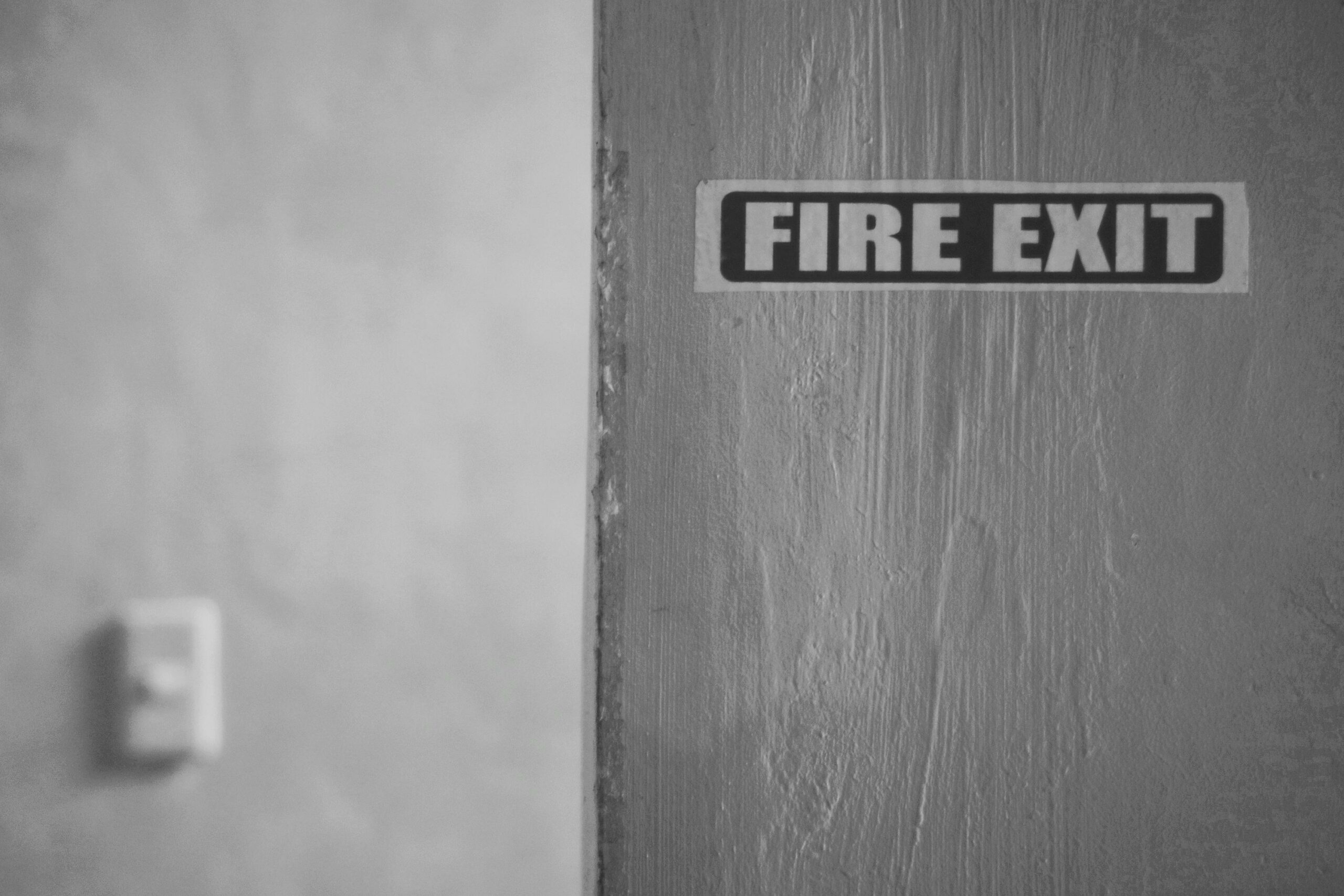Blog - 13/11/2024
Are Fire Door regulations applicable to All Buildings?


Blog by wayne
11 July,2024
Fire doors are an important tool in reducing the spread of fires in a property and help to ensure escape routes are protected if needed for evacuation. Fire doors are a legal requirement in various buildings, depending on their size and usage, under the Fire Safety (England) Regulations 2022. In this insight we detail the different types of fire doors, what buildings they are required in, and what you must do to ensure you are compliant with regulations.
Within this blog post we are going to take a more in depth look into fire doors, what are the different types, what sort of buildings need them, who is responsible for their install and upkeep. We’ll also look at the current regulations around fire doors and what you need to do to make sure you continue to comply with them.
As a component part of a building’s passive fire protection system, fire doors facilitate compartmentalisation. Fire door regulations can vary based on your location in the UK, how big the building is and what it is used for and whether it is a new construction, existing building or an extension.


What are the Different Types of Fire Doors
There are different classifications for fire doors as there are a number of types. The certification number indicates how long the door can withstand a fire for, with the most common being theFD30, which will withstand a fire for 30 minutes. In the case of larger buildings or where there is requirement for a higher level of protection Fire doors are available in a wide variety of ratings such as FD30, FD60, FD90 AND FD120.
The main Characteristics of a Fire Door Include:
- An Automatic Closing Mechanism
- Specially tempered fire-resistant glazing
- A minimum of three commercial-grade, heat-resistant hinges
- Intumescent seals
- A fire door sign
Fire safety standards
There are a number of specific standards that all fire doors need to meet;
- A Fire door is required to be of FD30 if not FD60 classification and provide a minimum of 30 minutes fire resistance.
- Fire Doors have to be tested in line with BS476: Part 221987 (British Standard) or BS EN 1634-1 2000 (UK adoption of European standards)
- You must have certification from the supplier of the door that confirms it meets the specification including any accessories like the letterbox and hinges.
Which Buildings Need Fire Doors
According to the type and use of a building, regulations vary across England and Wales.
Commercial Buildings
New buildings/change in use:
Under Approved Document B, all fire doors are required to meet BS476-22:1987or BS EN1634-1:2014; and the building inspector from the local authority may request proof of compliance.
Existing buildings:
In all buildings other than private residencies there is a requirement to comply with Regulatory Reform ( Fire Safety) Order 2005, which is concerned with:
- Any Businesses Premises even those that are part of a residential property
- Premises Involved with Charity or Voluntary Work
- Public buildings such as: schools, leisure centres, transport stations, entertainment venues, hospitals.
- Anywhere you pay for accommodation like Hotels, B&Bs, Camping or Caravan sites and self catering units.
- The communal areas in apartment blocks, maisonettes or houses of multiple occupation.
Residential Buildings
Residential buildings with Multiple occupancy
To comply with the Fire Safety (England) Regulations 2022, buildings that are over 11m high are required to have fire doors in all communal areas. These fire doors must be checked every quarter, while fire doors (flat entrance doors) should be inspected annually.
For New buildings and conversions, there is a requirement to comply with the standards of Building regulations Approved Document B2:
- All flats or rooms in an HMO or apartment block need to have a fire door fitted at the entrance of communal areas
- In the case of Flats located on floors 4.5m above ground level fire doors must be installed between all habitable rooms, as well as to the front door
- You should always use FD30 fire doors in flats
Homes and bungalows
The majority of homes do not need to have fire doors however, there are a small number of exceptions.
- In new constructions or renovations with three or more floors, fire doors must be installed in every habitable room that opens onto a stairwell. This requirement also applies when loft conversions are added to two-story homes.
- Any door that leads from your home to an integral garage needs to have a fire door
- In the case of residential dwellings FD30 doors will suffice
Who is responsible for fire doors?
There is a requirement to regularly have fire doors inspected and maintain. The regulatory reform (fire safety) order 2005 states that a responsible person must be appointed to manage anything that relates to fire safety precautions. This could be the building owner, an employer, a managing agent or someone appointed to the task
